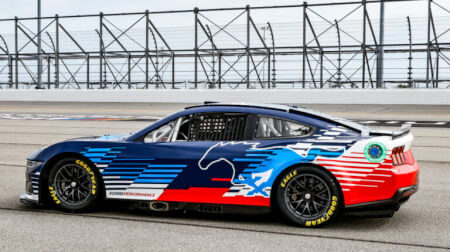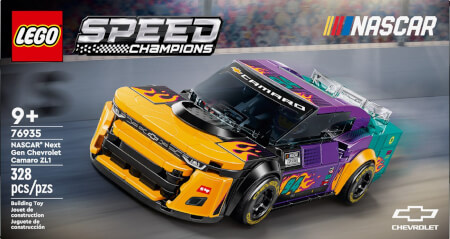May 21st 2024
2024 NASCAR Ford Mustang Dark Horse undergoes wind tunnel submission testing
American professional stock car racing team Stewart-Haas Racing has collaborated with 3D printer manufacturer 3D Systems to optimize the aerodynamic performance of the new 2024 NASCAR Ford Mustang Dark Horse. This partnership leverages advanced 3D printing technology to simplify the testing of various body panel shapes.
Using 3D Systems’ SLA machines and 3D Sprint software, the development process is designed to allow the creation of a race car body that marries the aesthetics of the 2024 production car with the aerodynamic needs of competitive racing.
This approach allows the Ford racing teams to meet the specific aerodynamic coefficient specifications mandated by NASCAR through extensive wind tunnel testing.
Traditionally, submitting a new race car body shape for NASCAR approval involves costly and time-consuming full-scale wind tunnel tests. Stewart-Haas Racing has tried to address this challenge by employing a more efficient method in partnership with 3D Systems. The process begins with computational fluid dynamics (CFD) analysts designing multiple body panel concepts using CAD software. These virtual models are tested in a simulated wind tunnel to identify the most promising shapes.
Once the optimal shapes are determined, they are converted into solid CAD models for 3D printing. The 3D printing technicians use 3D Systems’ 3D Sprint software to orient these models for printing, optimizing for time, quality and quantity. The files are then printed using 3D Systems’ ProX 800 SLA machine, producing precise parts that can be assembled onto the substructure of the full-scale car.
Additional 3D-printed tiles can be added or removed to evaluate different aerodynamic concepts during wind tunnel tests. Each test run provides valuable data on the aerodynamic performance, allowing engineers to fine-tune the car’s body shape.
This iterative process continues until the car meets the required aerodynamic specifications. After months of testing and refining, the final body shape is submitted to NASCAR. The approved design is then used to produce carbon-fiber body panels for the 2024 racing season.
For more Industry News, please Click Here
For more Industry News, please Click Here













